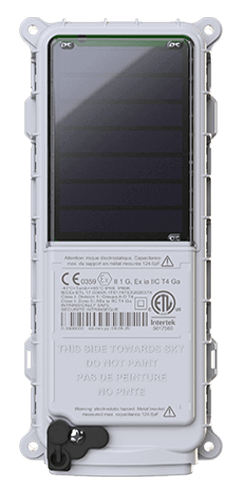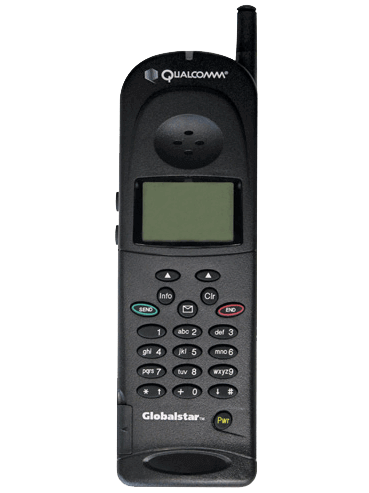12 Best Practices for Failover Connectivity
The demand for always-on connectivity has drawn a powerful line in the sand: downtime isn’t just inconvenient, it’s costly. Whether due to natural disasters, fiber cuts, power outages, or infrastructure overload, connectivity failures can disrupt operations, jeopardize safety, and damage reputations. Failover connectivity, in response, has become an imperative.
Satellite connectivity plays a critical role in any robust failover strategy. Unlike terrestrial networks that rely on fixed infrastructure, satellite networks provide resilient, independent coverage that remains online even when land-based systems are disrupted. Below are 12 best practices for integrating satellite systems into your organization’s failover framework, ensuring operational continuity regardless of the circumstances.
1. Design for Redundancy, Not Just Backup
Failover isn’t just about reacting, it’s about building in proactive redundancy. Satellite connectivity should operate in parallel or hot-standby mode with primary networks, allowing for a rapid transition with no manual intervention.
2. Use Independent Infrastructure
True failover requires independence. Choose satellite providers with infrastructure that doesn’t rely on shared terrestrial paths. Globalstar’s LEO satellite network operates on a bent-pipe architecture, requiring no fiber backhaul.
3. Match Connectivity to Critical Systems
Not all systems need instant failover, but mission-critical applications do. Prioritize satellite failover for SCADA, VoIP, POS, emergency comms, and telemetry systems that support safety and revenue continuity.
4. Embrace Low-SWaP-C Devices for Edge Locations
In remote or rugged environments, space, weight, power, and cost (SWaP-C) considerations are paramount. Satellite failover devices should be compact, power-efficient, and built for extreme environments.
5. Automate Network Switching
Manual toggling creates delay. Utilize routers or SD-WAN platforms that can detect outages and automatically redirect traffic to satellite connections, minimizing disruptions and eliminating the need for user input.
6. Test Routinely, Not Just During a Crisis
Failover plans that aren’t tested might as well not exist. Schedule quarterly switchovers to satellite service to ensure that equipment is functional, configurations are current, and teams are adequately trained.
7. Leverage Two-Way Satellite Comms
One-way satellite broadcasting limits your ability to respond. Two-way satellite links enable acknowledgments, commands, and remote diagnostics, which are crucial for industrial control, fleet coordination, and emergency communications.
8. Use Satellite to Protect Against Cyber Isolation
When ransomware or network isolation tactics sever primary links, satellite provides a separate path to restore access, report incidents, or maintain command-and-control capabilities—even during a breach.
9. Choose Scalable Plans and Hardware
Satellite failover should scale with your operations. Look for affordable, modular devices and flexible service plans that can be easily expanded across multiple sites without requiring re-architecting of your entire network.
10. Integrate with Existing Monitoring Systems
Ensure your satellite devices can integrate with your NMS or SOC dashboards. Visibility across both terrestrial and satellite links enables more innovative diagnostics, faster failover detection, and more proactive responses.
11. Validate Throughput and Application Compatibility
Not every satellite link supports high-bandwidth applications. Understand the throughput available and test your key applications, such as video calls, ERP, and sensor backhaul, to ensure they function properly during failover events.
12. Partner with a Provider That Knows Your Sector
Every industry has unique uptime demands. Globalstar supports verticals from emergency response to energy to logistics, offering tailored failover solutions that align with sector-specific risks, compliance needs, and operational tempo.
Be Ready Before It Matters
Downtime can happen in an instant. Recovery shouldn’t take hours. By integrating satellite connectivity into your failover architecture, you gain a layer of resilience that’s immune to ground-based failures—and a partner in ensuring continuity, safety, and trust.
With Globalstar’s reliable LEO satellite network, low-power devices, and scalable deployment models, failover connectivity is no longer complex or cost-prohibitive; it’s simply smart. Whether you’re protecting remote operations, field teams, or digital infrastructure, our solutions are designed to keep you connected when it matters most.
Reach out to learn more.
 SmartOne Solar
SmartOne Solar SmartOne C
SmartOne C STX3
STX3 STX3 Dev Kit
STX3 Dev Kit SPOT X
SPOT X SPOT Gen4
SPOT Gen4 SPOT Trace
SPOT Trace
